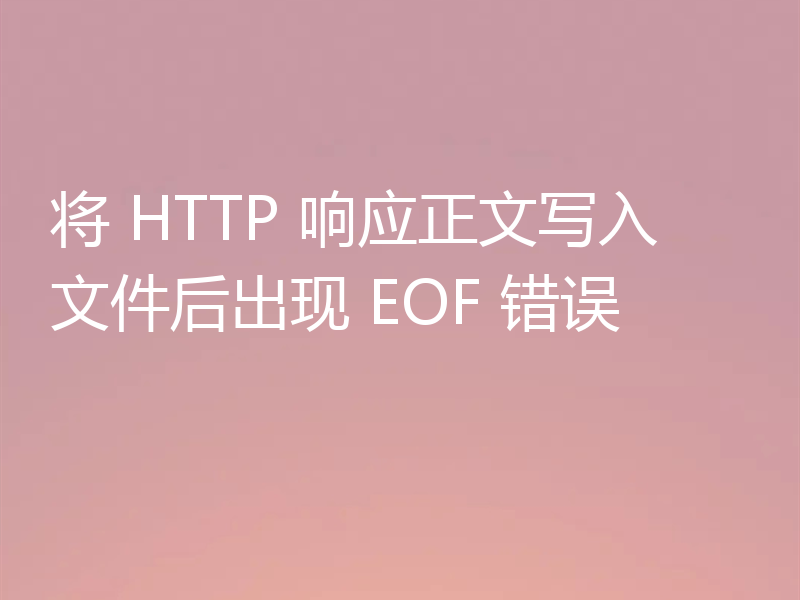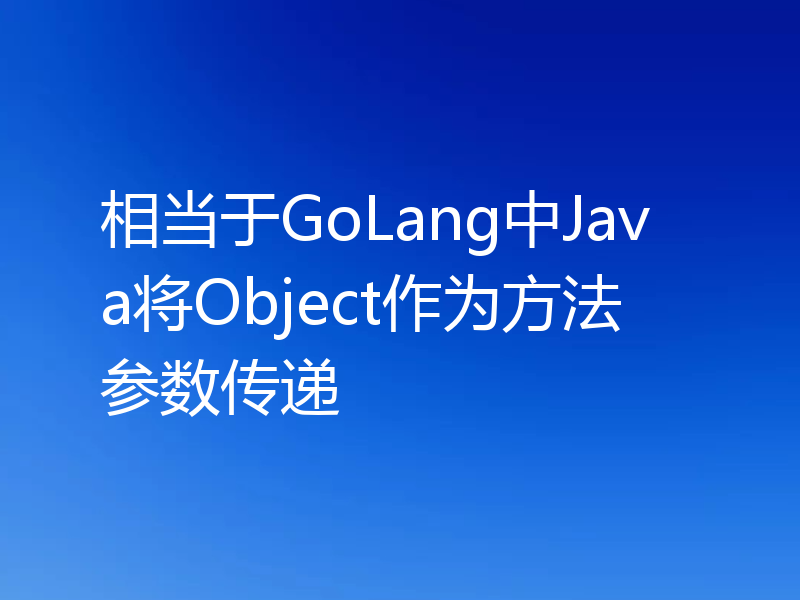Golang AES解密机制只给出另一个密文作为输出
来源:stackoverflow
2024-02-10 16:27:24
0浏览
收藏
“纵有疾风来,人生不言弃”,这句话送给正在学习Golang的朋友们,也希望在阅读本文《Golang AES解密机制只给出另一个密文作为输出》后,能够真的帮助到大家。我也会在后续的文章中,陆续更新Golang相关的技术文章,有好的建议欢迎大家在评论留言,非常感谢!
问题内容
我正在尝试在我的 go 应用程序中使用以下解密方法(通过互联网找到)。我拥有的 cipherkey 不是简单的 32 位密钥,但它看起来是 base64 编码的。因此,我先解码然后应用。在整个解密过程中我没有收到任何错误,但是此解密方法的输出看起来是另一个密文。
不确定我是否遗漏了 cipherkey 方面的内容。
func decrypt(key []byte, secure string) (decoded string, err error) {
//remove base64 encoding:
ciphertext, err := base64.stdencoding.decodestring(secure)
//if decodestring failed, exit:
if err != nil {
return
}
//create a new aes cipher with the key and encrypted message
block, err := aes.newcipher(key)
//if newcipher failed, exit:
if err != nil {
return
}
//if the length of the ciphertext is less than 16 bytes:
if len(ciphertext) < aes.blocksize {
err = errors.new("ciphertext block size is too short")
return
}
iv := ciphertext[:aes.blocksize]
ciphertext = ciphertext[aes.blocksize:]
fmt.println("before deciphering: ", string(ciphertext))
//decrypt the message
stream := cipher.newcfbdecrypter(block, iv)
stream.xorkeystream(ciphertext, ciphertext)
return string(ciphertext), err
}
更新原始问题...
我必须解密 go 应用程序中的数据。数据又来自 java 应用程序。以下是相同的片段,
public static final string key_algorithm = "aes";
public static final string aes_algorithm = "aes/cfb8/nopadding";
public static final string digest_algorithm = "md5";
public static final byte[] initial_vector = { -25, 9, -119, 91, -90, 112, 98, -40, 65, -106, -1, 96, 118, -13, 88,
85 };
package com.crypto;
import static com.cryptoconstant.aes_algorithm;
import static com.cryptoconstant.digest_algorithm;
import static com.cryptoconstant.initial_vector;
import static com.cryptoconstant.key_algorithm;
import java.math.biginteger;
import java.nio.charset.standardcharsets;
import java.security.invalidalgorithmparameterexception;
import java.security.invalidkeyexception;
import java.security.messagedigest;
import java.security.nosuchalgorithmexception;
import java.util.base64;
import javax.crypto.badpaddingexception;
import javax.crypto.cipher;
import javax.crypto.illegalblocksizeexception;
import javax.crypto.nosuchpaddingexception;
import javax.crypto.spec.ivparameterspec;
import javax.crypto.spec.secretkeyspec;
import org.springframework.beans.factory.annotation.value;
import org.springframework.stereotype.component;
import lombok.extern.slf4j.slf4j;
@slf4j
@component
public class messagecrypto {
/**
*
*/
@value("${design.secret.key}")
private string designsecretkey;
/**
* md 5
*
* @param input the input
* @return the string
* @throws nosuchalgorithmexception the no such algorithm exception
*/
private static string md5(final string input) throws nosuchalgorithmexception {
final messagedigest md = messagedigest.getinstance(digest_algorithm);
final byte[] messagedigest = md.digest(input.getbytes());
// convert byte array to a string of hex digits
final biginteger number = new biginteger(1, messagedigest);
// the 0 in the mask does the padding, 32 chars and x indicates lower hex
// digits.
return string.format("%032x", number);
}
/**
* inits the cipher
*
* @param mode the mode
* @return the cipher
* @throws nosuchalgorithmexception the no such algorithm exception
* @throws nosuchpaddingexception the no such padding exception
* @throws invalidkeyexception the invalid key exception
* @throws invalidalgorithmparameterexception the invalid algorithm parameter
* exception
*/
private cipher initcipher(final int mode) throws nosuchalgorithmexception, nosuchpaddingexception,
invalidkeyexception, invalidalgorithmparameterexception {
final secretkeyspec skeyspec = new secretkeyspec(md5(designsecretkey).getbytes(), key_algorithm);
final ivparameterspec initialvector = new ivparameterspec(initial_vector);
final cipher cipher = cipher.getinstance(aes_algorithm);
cipher.init(mode, skeyspec, initialvector);
return cipher;
}
/**
* encrypt
*
* @param datatoencrypt the data to encrypt
* @return the string
*/
public string encrypt(final string datatoencrypt) {
log.info("processing encrypt...");
byte[] encrypteddata = {};
try {
// initialize the cipher
final cipher cipher = initcipher(cipher.encrypt_mode);
// encrypt the data
final byte[] encryptedbytearray = cipher.dofinal(datatoencrypt.getbytes());
// encode using base64
encrypteddata = base64.getencoder().encode(encryptedbytearray);
} catch (illegalblocksizeexception | badpaddingexception | nosuchalgorithmexception | nosuchpaddingexception
| invalidalgorithmparameterexception | invalidkeyexception e) {
log.error("encryption error: {} ", e);
}
log.info("processed encrypt...");
return new string(encrypteddata);
}
/**
* decrypt
*
* @param encrypteddata the encrypted data
* @return the string
*/
public string decrypt(final string encrypteddata) {
log.info("processing decrypt...");
string decrypteddata = "";
try {
// initialize the cipher
final cipher cipher = initcipher(cipher.decrypt_mode);
// decode using base64
final byte[] encryptedbytearray = base64.getdecoder().decode(encrypteddata.getbytes());
// decrypt the data
final byte[] decryptedbytearray = cipher.dofinal(encryptedbytearray);
decrypteddata = new string(decryptedbytearray, standardcharsets.utf_8);
} catch (illegalblocksizeexception | badpaddingexception | nosuchalgorithmexception | nosuchpaddingexception
| invalidalgorithmparameterexception | invalidkeyexception e) {
log.error("decryption error: {} ", e);
}
log.info("processed decrypt...");
return decrypteddata;
}
}
我已经从他们那里收到了密钥和密文。现在我需要在 go 中实现与此 java 等效的东西。我正在尝试使用 cfb 加密/解密机制,这似乎很容易实现。但是,我正在尝试弄清楚如何从提供的密钥中检索实际的密钥。从 java 代码来看,我需要有一些与 md5() 方法在 java 中执行的操作等效的操作。
这是我尝试过的东西,
key := "94k/IwqJQ5wf4Yt5JZmbW85r2x246rI3g3LZbTI80Vo="
key_decr := md5.Sum([]byte(key))
key = hex.EncodeToString(key_decr[:])
log.Println("key:", key)
decrypt(key, secureText)
但是,这不起作用。
正确答案
这两个代码有两点不同:
- java 代码使用 cfb8,go 代码使用 cfb128。
- java 代码在加密过程中不会执行 iv 和密文的串联,但 go 代码会假设这种串联,因此在解密过程中将 iv 和密文分开。
为了使两种代码兼容,必须消除这些差异。由于java代码似乎是参考,因此go代码中需要进行以下更改:
- 将删除加密数据到 iv 和密文的分离。因此,数据必须至少为 16 字节大的约束以及其检查也被省略。将使用 java 代码中的静态 iv(java 代码的负二进制补码整数通过添加 256 转换为无符号整数):
iv := []byte{231, 9, 137, 91, 166, 112, 98, 216, 65, 150, 255, 96, 118, 243, 88, 85} - 在 go 代码中将使用 cfb8。 crypto/cipher 包实现了具有固定段大小的 cfb128,因此无法使用。 cfb8 实现的可能替代方案是 github.com/tnze/gomcbot/cfb8 :
stream := cfb8.newcfb8decrypt(block, iv)
总体(为了简单起见,没有异常处理):
import (
"crypto/aes"
"crypto/md5"
"encoding/base64"
"encoding/hex"
"log"
"github.com/Tnze/gomcbot/CFB8"
)
func main() {
key := "94k/IwqJQ5wf4Yt5JZmbW85r2x246rI3g3LZbTI80Vo="
keyHashed := md5.Sum([]byte(key))
keyHex := hex.EncodeToString(keyHashed[:])
cipherText := "h6OpNEE4g8hjyJl5lk5Qm4ZyXP/j3ADWqREolDL8lwb0LuyDqQdrlLGfsg==" // Ciphertext from the Java side (created with AES/CFB8)
decryptedText, _ := decrypt([]byte(keyHex), cipherText)
log.Println(decryptedText)
}
func decrypt(key []byte, cipherTextB64 string) (decrypted string, err error) {
cipherText, _ := base64.StdEncoding.DecodeString(cipherTextB64) // Fix 1: don't separate IV and ciphertext
iv := []byte{231, 9, 137, 91, 166, 112, 98, 216, 65, 150, 255, 96, 118, 243, 88, 85} // Fix 2: apply the static IV from the Java side
block, _ := aes.NewCipher(key)
stream := CFB8.NewCFB8Decrypt(block, iv) // Fix 3: apply CFB8
stream.XORKeyStream(cipherText, cipherText)
return string(cipherText), nil
}
关于安全:
- 静态 iv 是一个漏洞,因为这会导致密钥/iv 对的重复使用。为了避免这种情况,通常在加密过程中生成一个随机 iv 并与密文连接(注意 iv 不是秘密的)。在解密过程中,两个部分是分开的(顺便说一下,这对应于原始 go 代码中的实现)。
- 通过快速且不安全的摘要(例如 md5)从密码派生密钥是一个漏洞。使用pbkdf2等密钥导出函数更安全。
今天关于《Golang AES解密机制只给出另一个密文作为输出》的内容就介绍到这里了,是不是学起来一目了然!想要了解更多关于的内容请关注golang学习网公众号!
版本声明
本文转载于:stackoverflow 如有侵犯,请联系study_golang@163.com删除
 防止单引号在插入SQL时产生的方法
防止单引号在插入SQL时产生的方法
- 上一篇
- 防止单引号在插入SQL时产生的方法

- 下一篇
- 使用 ObjectBox Go 编译的二进制文件的 部署/重新分发方案
查看更多
最新文章
-

- Golang · Go问答 | 1年前 |
- 在读取缓冲通道中的内容之前退出
- 139浏览 收藏
-

- Golang · Go问答 | 1年前 |
- 戈兰岛的全球 GOPRIVATE 设置
- 204浏览 收藏
-

- Golang · Go问答 | 1年前 |
- 如何将结构作为参数传递给 xml-rpc
- 325浏览 收藏
-

- Golang · Go问答 | 1年前 |
- 如何用golang获得小数点以下两位长度?
- 478浏览 收藏
-

- Golang · Go问答 | 1年前 |
- 如何通过 client-go 和 golang 检索 Kubernetes 指标
- 486浏览 收藏
-

- Golang · Go问答 | 1年前 |
- 将多个“参数”映射到单个可变参数的习惯用法
- 439浏览 收藏
-

- Golang · Go问答 | 1年前 |
- 将 HTTP 响应正文写入文件后出现 EOF 错误
- 357浏览 收藏
-

- Golang · Go问答 | 1年前 |
- 结构中映射的匿名列表的“复合文字中缺少类型”
- 352浏览 收藏
-

- Golang · Go问答 | 1年前 |
- NATS Jetstream 的性能
- 101浏览 收藏
-

- Golang · Go问答 | 1年前 |
- 如何将复杂的字符串输入转换为mapstring?
- 440浏览 收藏
-

- Golang · Go问答 | 1年前 |
- 相当于GoLang中Java将Object作为方法参数传递
- 212浏览 收藏
-

- Golang · Go问答 | 1年前 |
- 如何确保所有 goroutine 在没有 time.Sleep 的情况下终止?
- 143浏览 收藏
查看更多
课程推荐
-

- 前端进阶之JavaScript设计模式
- 设计模式是开发人员在软件开发过程中面临一般问题时的解决方案,代表了最佳的实践。本课程的主打内容包括JS常见设计模式以及具体应用场景,打造一站式知识长龙服务,适合有JS基础的同学学习。
- 543次学习
-

- GO语言核心编程课程
- 本课程采用真实案例,全面具体可落地,从理论到实践,一步一步将GO核心编程技术、编程思想、底层实现融会贯通,使学习者贴近时代脉搏,做IT互联网时代的弄潮儿。
- 516次学习
-

- 简单聊聊mysql8与网络通信
- 如有问题加微信:Le-studyg;在课程中,我们将首先介绍MySQL8的新特性,包括性能优化、安全增强、新数据类型等,帮助学生快速熟悉MySQL8的最新功能。接着,我们将深入解析MySQL的网络通信机制,包括协议、连接管理、数据传输等,让
- 500次学习
-

- JavaScript正则表达式基础与实战
- 在任何一门编程语言中,正则表达式,都是一项重要的知识,它提供了高效的字符串匹配与捕获机制,可以极大的简化程序设计。
- 487次学习
-

- 从零制作响应式网站—Grid布局
- 本系列教程将展示从零制作一个假想的网络科技公司官网,分为导航,轮播,关于我们,成功案例,服务流程,团队介绍,数据部分,公司动态,底部信息等内容区块。网站整体采用CSSGrid布局,支持响应式,有流畅过渡和展现动画。
- 485次学习
查看更多
AI推荐
-

- ChatExcel酷表
- ChatExcel酷表是由北京大学团队打造的Excel聊天机器人,用自然语言操控表格,简化数据处理,告别繁琐操作,提升工作效率!适用于学生、上班族及政府人员。
- 3453次使用
-

- Any绘本
- 探索Any绘本(anypicturebook.com/zh),一款开源免费的AI绘本创作工具,基于Google Gemini与Flux AI模型,让您轻松创作个性化绘本。适用于家庭、教育、创作等多种场景,零门槛,高自由度,技术透明,本地可控。
- 3660次使用
-

- 可赞AI
- 可赞AI,AI驱动的办公可视化智能工具,助您轻松实现文本与可视化元素高效转化。无论是智能文档生成、多格式文本解析,还是一键生成专业图表、脑图、知识卡片,可赞AI都能让信息处理更清晰高效。覆盖数据汇报、会议纪要、内容营销等全场景,大幅提升办公效率,降低专业门槛,是您提升工作效率的得力助手。
- 3686次使用
-

- 星月写作
- 星月写作是国内首款聚焦中文网络小说创作的AI辅助工具,解决网文作者从构思到变现的全流程痛点。AI扫榜、专属模板、全链路适配,助力新人快速上手,资深作者效率倍增。
- 4823次使用
-

- MagicLight
- MagicLight.ai是全球首款叙事驱动型AI动画视频创作平台,专注于解决从故事想法到完整动画的全流程痛点。它通过自研AI模型,保障角色、风格、场景高度一致性,让零动画经验者也能高效产出专业级叙事内容。广泛适用于独立创作者、动画工作室、教育机构及企业营销,助您轻松实现创意落地与商业化。
- 4051次使用
查看更多
相关文章
-
- GoLand调式动态执行代码
- 2023-01-13 502浏览
-
- 用Nginx反向代理部署go写的网站。
- 2023-01-17 502浏览
-
- Golang取得代码运行时间的问题
- 2023-02-24 501浏览
-
- 请问 go 代码如何实现在代码改动后不需要Ctrl+c,然后重新 go run *.go 文件?
- 2023-01-08 501浏览
-
- 如何从同一个 io.Reader 读取多次
- 2023-04-11 501浏览



